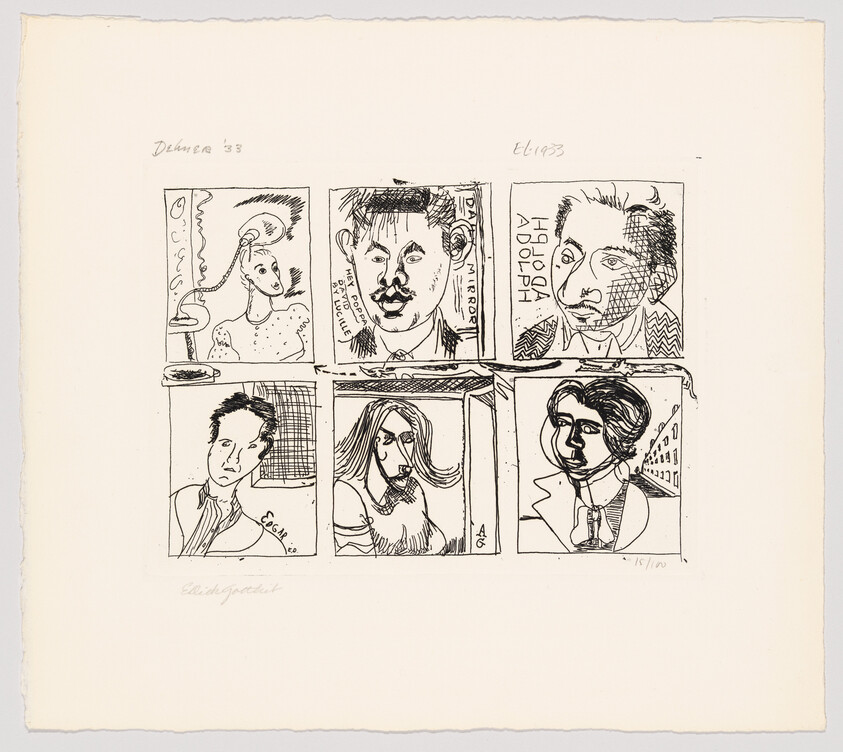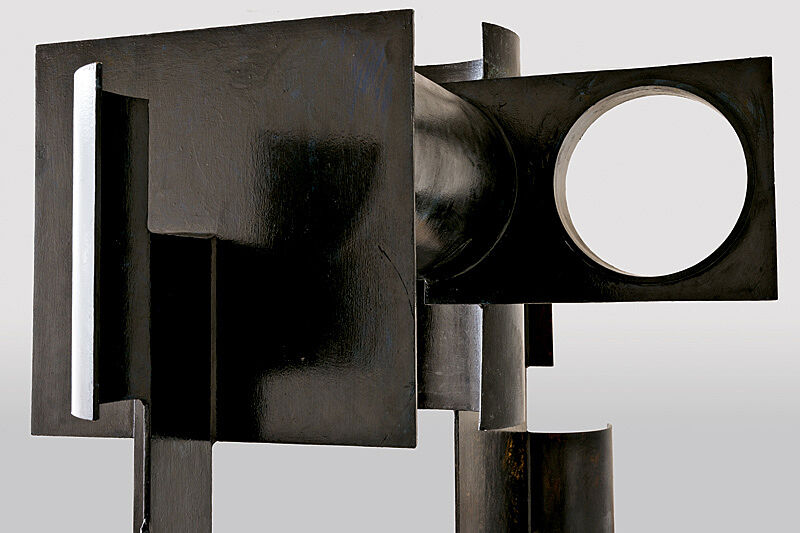David Smith, Untitled (Candida), 1965
Oct 5, 2011
0:00
David Smith, Untitled (Candida), 1965
0:00
Narrator: Untitled (Candida), is one of the very last works that Smith made. It’s also one of the flattest—overall, it’s less than an inch deep. Peter Stevens.
Peter Stevens: It's a painterly space that we are experiencing. In fact, as we walk around the sculpture to see the side of it, it disappears. It becomes a line.
This kind of frontal pictorial view is heightened in this sculpture by the fact that he leaves the center of the sculpture empty.
Narrator: The pictorial space in the middle of the work opens it up to the surroundings. The same is true of the burnished surface of the work, which is covered with reflective gestures. Smith made these marks with his electric disk grinder, a machine usually used to polish and smooth the surface.
In 1964, the poet and curator Frank O’Hara asked Smith about his surface.
David Smith: It was finished up to show a brightness, so that brightness reflects the sky, the golden of an afternoon sun, or the hard blue bright sun. Yeah, sometimes the green of the mountains gets in. It has a very gentle reflective quality.
I intended the reflective surface to be part of the concept. But the polishing is not so important. Any more than the brush stroking is important in a picture. It’s the concept of a form, or the concept of a content.
Narrator: When Smith says that he intended the reflective surface to be part of the concept, that doesn’t mean he meant it to merge perfectly with the sculpture’s form. The surface flickers—it seems fleeting and immaterial. The steel is of course heavy—definitively solid and strong. There seems to be a conflict between our visual experience of the surface images and our encounter with the sculpture as a thing. For Smith, this conflict was important. Its charge meant that the sculpture was more likely to linger in our visual memories.


